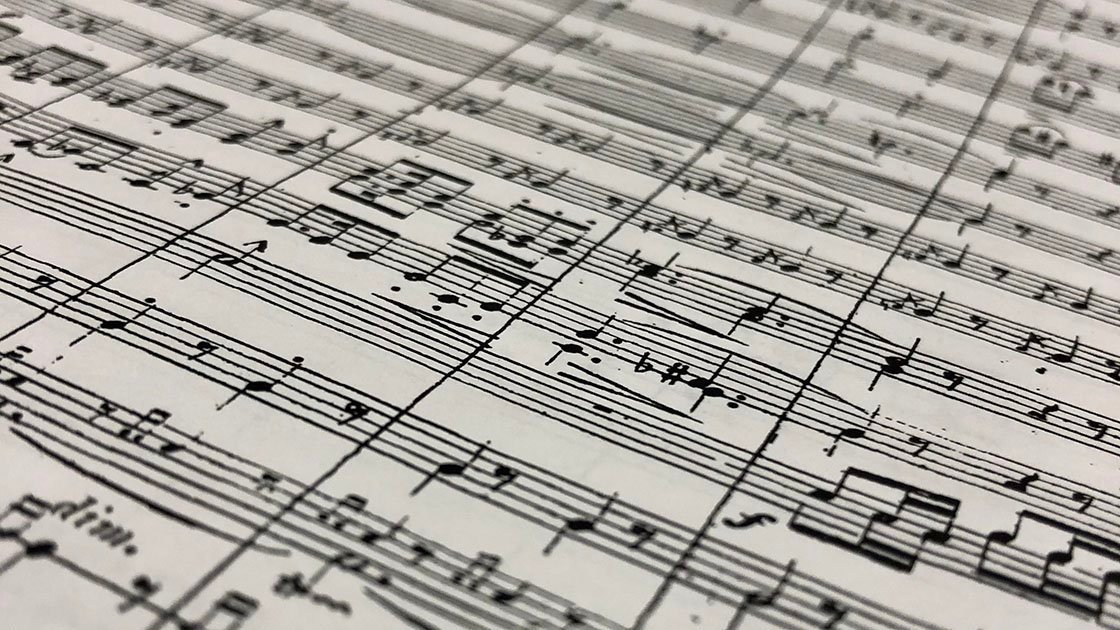The Milan Lectures, part 3
David Whitwell
On the origins of Symbols for Dynamics
Here we discuss the symbols for dynamics used in the notation of music—the lower case p of the Italian word piano and the lower case f of the Italian word forte.
Today we teach these symbols primarily as representing levels of loudness. But when these symbols were first introduced, in the beginning of the seventeenth century, the Baroque Period, they were used for an entirely different purpose, not just for indications of volume, but as symbols of emotional quality. We can see this very clearly in the writings of Michael Praetorius, a German conductor and composer. He was also the author of the very best contemporary treatise on performance practice of the seventeenth century, a three-volume work called Syntagma Musicum of 1619. Volume one is about the mathematical grammar of music, volume two consists of plates showing families of instruments and volume three is all about performance practice. And here is what he wrote, and it has nothing to do with loud and soft:
Changes in dynamics by the performer are agreeable and popular to express the feelings of the music and to affect the spirit of the listener.
At the same time these familiar symbols were first used, the beginning of the seventeenth century, they were intended for use by the performer; it was not yet the time when this duty fell to the composer. We can see this in a statement by the English composer and writer, Christopher Simpson in 1659: “We play piano and forte according to our own desire.”
This freedom left to the performer can be clearly seen in a first-hand account of the famous Arcangelo Corelli playing his violin.
He suffered his passions to hurry him away so much whilst he was playing on the violin that his eyes would sometimes turn as red as fire, his face would become distorted, his eyeballs roll as in an agony, and he gives in so much to what he is doing that he doth not look like the same man.
Of all the things which Corelli did here which so impressed this listener, no indications of any kind can be found on the page of music. It is a fine illustration of something I tell all musical performers today: There is no music to be found on the page – the music is found within yourself!
Today we teach these symbols almost as if they were like road signs – if you see p it means everything from this point on is soft. In addition, also at the earlier time it was felt that even if a composer did write these symbols on paper then as a matter of personal musicianship the performer would be free to continue making changes in dynamics as is the case with fine musicians today. We have a valuable account of this in the report of a performance by J.S. Bach by a contemporary, Johann Cramer.
All who have heard Bach play the clavichord must have been struck by the endless nuances of shadow and light that he casts over his performance.
And again, the changes which this eyewitness reports are not things which appear on paper. A similar account is found by Johann Quantz in his Treatise on Flute Playing.
Even in sections marked f or p the constant play of light and shadow keeps the textures alive with interest.
The implication of this observation is that without this “constant play of light and shadow” the music on paper remains just dead symbols.
It is also very interesting and enlightening to consider what these words piano and forte mean in the Italian language. In my professional Italian-English Dictionary by Cassell, for example, when you look up the word forte you find a long string of expressive definitions, including Vigorous, Powerful, Sturdy, Large, Hale, Healthy, Considerable, Large, High and Angry. It is only when you get to the twelfth of these words that you find “Loud.”
The result of looking up the word piano is even more surprising. The first definition is Soft, but the next one is Gentle and the third one is Slow! Today we never think of p meaning slow, but on the other hand when you think of all the large forms – symphony, concerto, sonata – of the music you know of the eighteenth century, the second movement is almost invariably a slow movement and it is always marked at the beginning p! Here we must think of the symbol p as meaning slow because we would never say to a class, “We will now hear the soft movement of Mozart’s Symphony Nr. 40.”
It is also rarely understood by musicians today that the symbol pp can mean either “very soft” or “very slow.” Mozart, who never used the word ritard., used pp to mean just that! And in Schubert, Dr Doerr of the Schubert Society of Germany told me that in the music of Schubert when he wrote dim. in 90% of the time he also meant “slower.”
I wonder how we have lost these wider definitions of the symbols p and f and only think of them as soft and loud? I am afraid one answer lies in the popularity of contests in music, something which only began in the nineteenth century. Because contests in music are judged on the basis of adherence to what the eye sees on paper, not on the basis of the ear and subjective musicianship. If the music paper says p the concern of the judges becomes who can play the softest, etc. This tendency took on a personal meaning for me in 1990 when I was invited to be the President of the Jury in an international piano contest in Italy. There were eleven judges and they were all, except for myself, locally famous piano teachers. There were no written comments and we judged like Roman Emperors. After each performance we would turn among ourselves and indicate with a thumb up in the air that the contestant could continue to the next round. But if a majority of the thumbs pointed down, then the student performer must pack their suitcase and go home! After one young lady from Finland performed a very expressive and musical Beethoven Sonata, the vote was ten thumbs down and one [mine] up! I had known one of the other judges, Hector Moreno of Argentina, before and so I asked him to explain to me why this wonderful performance which was so musical was voted down? He answered immediately, “Oh, a piano contest has nothing to do with Music!”
I would like to recommend that we return to thinking of these symbols as being expressions of the heart and not of science.



